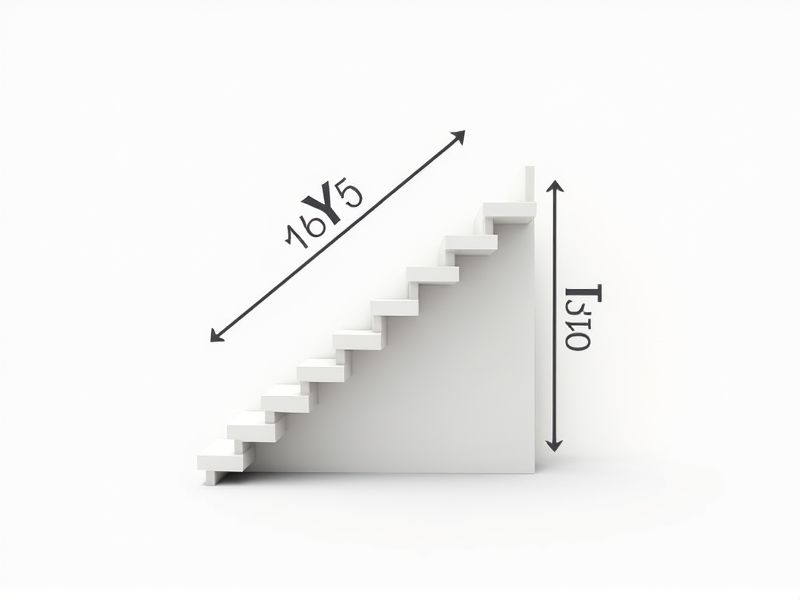
When planning the construction of stairs, it's important to adhere to standard dimensions to ensure safety and comfort. Typically, the recommended rise (vertical height of each step) is between 7 and 7.75 inches, while the run (horizontal depth of each tread) is about 10 to 11 inches. The minimum stair width for residential spaces is usually 36 inches, providing enough space for easy passage. Keeping these dimensions in mind helps create a staircase that is both functional and safe for everyday use.
Tread Depth
The standard stair design mandates a minimum tread depth of 11 inches to ensure safe and comfortable stepping. This dimension allows for adequate foot placement, reducing the risk of slips and falls. Furthermore, the maximum rise height should not exceed 7.5 inches, maintaining a balance with tread depth for ergonomic efficiency. Implementing these standards in your projects can enhance safety and accessibility for users.
Riser Height
The standard riser height for staircases typically ranges between 4 inches (102 mm) and 7 inches (178 mm), with 7 inches being the most common measurement. According to the International Building Code, the maximum riser height should not exceed 7.75 inches (197 mm) to ensure safety and ease of use. For optimal user experience, keeping the rise consistent across all steps is crucial, as inconsistencies can lead to trips and falls. When designing or renovating stairs, consider that a total rise of 12 to 13 steps is generally ideal for comfortable ascent and descent.
Riser To Tread Ratio
The riser to tread ratio is critical for ensuring safety and comfort in staircase design, with the recommended measurement being a riser height of 7 inches and a tread depth of 11 inches. This 7:11 ratio helps reduce the risk of trips and falls while providing a comfortable ascent or descent. Building codes often mandate a maximum riser height of 8 inches, emphasizing the importance of maintaining ergonomic standards. Proper adherence to these measurements can significantly enhance user experience and accessibility in both residential and commercial spaces.
Stair Width
Stair width is a critical factor in building design, with standard guidelines typically recommending a minimum width of 36 inches (91 cm) for residential staircases and 44 inches (112 cm) for commercial applications. This width ensures safe and efficient foot traffic, allowing two people to pass each other comfortably. For specialized environments, such as places of assembly, the width may increase to accommodate higher occupancy levels, often exceeding 48 inches (122 cm). When designing or renovating stairs, consider local building codes, which may impose specific regulations regarding width to enhance safety and accessibility.
Nosing Projection
The standard for stair design typically stipulates a nosing projection of at least 1 inch (25 mm) to enhance safety and accessibility. This projection helps prevent slips, providing a tactile edge for users, especially in low-light conditions. You should ensure the nosing is not only prominent but also rounded to reduce tripping hazards. Compliance with building codes, which often specify a maximum overhang of 1.5 inches (38 mm), is essential for maintaining structural integrity and user safety.
Headroom Clearance
Headroom clearance for stairways is crucial to ensure safety and accessibility, typically requiring a minimum height of 80 inches (6 feet 8 inches) above each step. This standard applies to all types of staircases, including residential and commercial buildings, with variations influenced by local building codes. Insufficient headroom can lead to head injuries and is a common cause of accidents in stair design. Ensuring adequate clearance not only enhances safety but also complies with the Americans with Disabilities Act (ADA) guidelines when applicable.
Handrail Height
The standard handrail height for stairs typically ranges between 34 and 38 inches, measured from the tread nosing to the top of the handrail. This height ensures safety and provides adequate support for individuals navigating stairs. Building codes often mandate that the handrail must be continuous and designed to accommodate all users, including those with mobility aids. Installing the handrail at the proper height not only enhances safety but also ensures compliance with regulations set by organizations like the International Building Code (IBC).
Landing Size
The standard landing size for stairways typically measures a minimum of 36 inches in width and a depth of at least 36 inches, ensuring ample space for safe transitions. Building codes often dictate that landings must be level and unobstructed, allowing you to navigate easily between flights of stairs or doorways. This design consideration is crucial for both residential and commercial properties, enhancing accessibility and safety for users. Properly sized landings also minimize the risk of falls, making them a vital aspect of stair construction.
Stringer Angle
The standard for stair construction emphasizes the importance of stringer angle, typically ranging from 30 to 38 degrees for optimal safety and usability. A well-designed stair stringer should have a rise of about 7 inches and a run of 11 inches, ensuring a comfortable tread depth. Adhering to these dimensions can help you avoid steep stairs that pose a risk of falls. Accurate calculations for stringer angle are crucial, as they directly affect the overall aesthetics and functionality of the stairway.
Step Count
The standard stair design recommends a step count of 12 to 13 steps for an average flight. Each step should have a rise of 7 to 8 inches, providing a comfortable ascent for most users. The tread depth typically ranges from 11 to 12 inches, ensuring stability and safety. Adhering to these measurements can enhance accessibility and improve the overall user experience.
